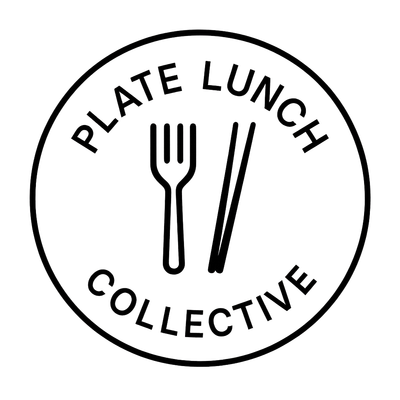Nobody's Scrolling Your Feed Anymore. They're Searching.

I was talking to a friend today about the recent Instagram changes. Users can now choose interests to fine-tune their Reels and Explore feeds. Then Adam Mosseri, head of Instagram, came out with guidance: be specific about your content and goal. Be clear. Have repeatable concepts.
What I'm seeing, both here and everywhere else, is that search (that legacy interface we've used for two decades) is shifting away from input-output and becoming conversational. Chatbots are taking on the role of assistants, confidants even, helping people find things.
If this is happening with search, the everyday utility we barely think about, wouldn't it follow that social media platforms are facing the same pressure? They spent years competing with traditional search engines by adding discovery features. Now AI chat interfaces have disrupted that evolution. Social platforms have to pivot again, this time into becoming full-fledged search and discovery engines just to survive.
The Data Shows It's Already Happened
Instagram's average engagement rate fell 24.1% year-over-year in early 2025. A decline significant enough to signal a broader shift in user behavior.
Average daily time spent on social media decreased from 151 minutes in 2023 to around 143 minutes in 2024-2025. People aren't leaving platforms. They're using them differently.
The shift shows up most clearly in younger demographics, but the pattern extends across generations:
| Generation | Social Search Adoption | Key Behavior |
|---|---|---|
| Gen Z (11-27) | 64% use TikTok for search | Social-first is dominant behavior |
| Millennials (28-43) | 49% use TikTok for search | Significant minority behavior |
| Gen X (44-59) | 15% use social for search | Loyal to Google for search |
| All Users | 37% start product research on social | Growth across the spectrum |
Gen Z leads this shift, but platforms aren't restructuring around one demographic. They're betting that behavior patterns starting with younger users will spread. That's what the infrastructure investments prove.
Leslie Ann Hall, CEO of Iced Media, said in July 2025: "We are absolutely witnessing the biggest disruption in discovery and search behavior, since the introduction of Google, that brands have ever seen."
The pattern shows up across platforms. People are spending less time scrolling feeds. They're using search features more. Platform investments have shifted to match this behavior. TikTok launched Search Ads in September 2024. A direct move to monetize search intent, competing with Google Ads' business model. In June 2025, they announced an AI-powered "Search Center" to make it easier for advertisers to buy search ads.
Then in July 2025, Google started indexing Instagram content. Public posts from business and creator accounts now appear in Google search results. Instagram content became a searchable database outside its own app.
These aren't experimental features. These are massive infrastructure investments responding to a behavioral shift that already happened.
This Goes Beyond "Social Becomes Search"
I've written about AI search changing discovery. I've covered platforms competing with Google. I've explained why the retrieval layer matters more than individual platform algorithms.
This is different.
The old competitive threat was traditional search engines. Google took discovery traffic. Platforms responded by adding search features, improving their recommendation algorithms, keeping users inside their apps.
AI chat interfaces disrupted this. They bypass traditional search and social feeds entirely. Someone asks ChatGPT or Perplexity for restaurant recommendations. The AI pulls from reviews, social posts, articles, synthesizes an answer. No feed scrolling required. No Google search results page. Just a direct answer pulling from everywhere.
Social platforms built their business on being the discovery layer. Feed scrolling was how people found new things. Now an entirely different interface is becoming how people discover things, and it treats social content as just one source among many to query and synthesize from.
Platforms see this. The infrastructure changes prove it.
What Instagram's Changes Actually Mean
When Instagram asks users to select interests, they're building a taxonomy. An explicit classification system for all their content. This requires every piece of content to be categorized, tagged, mapped to topics. You don't build that infrastructure for feed curation. You build it for retrieval.
Mosseri's guidance to creators makes sense in this context. "Be specific about your content and goal" means help our system understand what category you belong in. "Have repeatable concepts" means build a library we can index by topic, not just individual viral moments we can push into feeds.
The old model rewarded whatever got engagement. The new model rewards what can be found when someone searches.
The Platform Investment Pattern
TikTok's Search Ads Campaign wasn't a small feature launch. David Kaufman, TikTok's Global Head of Monetization, said: "TikTok is a destination for discovery and a place where users come to search. We are excited to offer advertisers a new way to tap into TikTok's multifaceted search behaviors, where highly motivated users discover content both intentionally and serendipitously. This is just the beginning of our journey with ads for search."
Just the beginning. This isn't a side project for them.
Instagram's partnership with Google matters more. For years, Instagram kept content inside its walled garden. Now they're letting Google index it. Why? Because visibility in Google search matters more than keeping everything proprietary. The math changed. Being discoverable across search surfaces became more valuable than controlling the distribution exclusively through feeds.
YouTube Shorts now gets 70 billion daily views. Most of that comes from recommendations and search, not subscriptions or feed scrolling.
Platforms are investing billions in search infrastructure while feed engagement declines.

Where Traffic Actually Comes From Now
The platform investments in search infrastructure make more sense when you see what they're up against. Social platforms aren't just competing with each other for discovery traffic anymore. They're competing with AI search engines that pull from completely different sources. And visibility in one doesn't guarantee visibility in the other.
A study of over 20,000 queries compared Google's page-one results with ChatGPT's answers. The overlap was 62%. The correlation between Google rank and ChatGPT position was 0.034. Almost random.
Some brands crossed over well. Coursera at 86%, GoDaddy at 83%. Others barely registered. Hostinger at 32%, edX at 47%.
Visibility in Google doesn't reliably carry into AI search. That drop matters because AI search traffic is growing at 5.3% monthly for ChatGPT, 7.7% monthly for Perplexity.
Meanwhile, social platforms are restructuring to compete for the same query-based discovery traffic. The feed becomes one possible interface among many. Search and AI-mediated discovery become the primary ways people find content.
What This Means If You're Optimizing for Feeds
Optimizing for viral feed moments made sense when feeds were the primary discovery mechanism. Chasing engagement rates, timing posts perfectly, using trending audio. These tactics worked because feed distribution was how content spread.
That model is declining. Not gone, but declining measurably.
If your strategy is still built around feed engagement, you're working with a model that's losing ground. Instagram's own data shows most interaction isn't happening in feeds anymore. The app functions as a discovery engine, with search and algorithmic recommendations doing most of the work.
The Canadian client I worked with last year had good content with authentic delivery. His bio framed him wrong. It showed up in his reach. Once we fixed the framing to match his actual story, engagement increased and advertisers responded. That was a feed optimization problem.
The feed still matters for that. But it matters less for discovery than it did two years ago.
What Replaces the Feed
Search and discovery features. Interest-based recommendations. AI-assisted browsing where the platform shows you content based on semantic understanding of topics, not just engagement signals from your network.
Look at MrBeast. His content strategy isn't about individual viral hits. He builds repeatable series. Consistent formats. Each video is part of a larger library categorized by topic and style. That structure makes his content discoverable through search and gives the recommendation algorithm something to work with.
This shift from feed engagement to search discoverability isn't unique to one platform. Instagram functions as an AI search engine now, and the same pattern shows up everywhere AI mediates discovery.
The pattern shows up with businesses too. One-off viral attempts still work occasionally, but they don't build the kind of structured presence that works across multiple discovery interfaces.
The Feed Won't Disappear Tomorrow
Feeds still exist. People still scroll. Feed engagement still drives some outcomes. Nobody's saying delete your social accounts and only focus on search.
User behavior shifted. Platform investments shifted. The interface changed.
Average daily time spent on social media decreased from 151 minutes in 2023 to around 143 minutes in 2024-2025. People aren't leaving platforms. They're using them differently. Less passive scrolling, more active searching.
37% of all users now start product research on social media. 90% of Gen Z have purchased a product they saw on social media in the last six months. These purchases don't come primarily from feed scrolling. They come from search and discovery.
The feed won't die completely. But how long you wait to adapt your strategy to where the traffic actually comes from? That matters.
You Should Optimize for Indexing
The people adapting to this are tracking where their traffic actually comes from. Feed, search, explore, external referrals. Monthly. The trend tells the story more than any single month's numbers.
The mechanics of how AI systems actually read and cite content matter more than most realize. Structured data and semantic relationships determine whether you're discoverable at all.
They're treating their content as a searchable archive. Topic-specific posts that solve problems or answer questions. Keyword-rich without being awkward. Structured so someone searching for that topic can find it six months from now.
Repeatable content series work better than they used to. They help platforms categorize you by topic. They build authority in specific areas. They work for search discovery in ways one-off posts don't.
The same content foundation works across traditional search, social search, and AI answers. The people who adapted stopped optimizing separately for each platform. They started building for discoverability everywhere.
Instagram engagement down 24%. Gen Z search behavior up to 74% on TikTok. Platforms investing billions in search infrastructure. The feed isn't coming back as the primary discovery interface.
Content strategy follows behavior. People are looking for things differently now. Traditional SEO and AI-mediated search work together, not against each other. For Hawaii businesses specifically, this shift creates both risk and opportunity depending on how quickly you adapt.
Related Reading
Social Proof in 2025: What Actually Works
Trust became a metric somewhere along the way. How social proof functions in a world where one in five reviews came from a machine.
Stop Competing on Price: Why Authentic Brand Stories Beat Algorithm Hacks
The brands that break through aren't following a checklist. They're telling stories people want to be part of.
Why SEO Is Now Business Infrastructure (Not Marketing Tactics)
Between 2020 and 2025, search and social platforms evolved into AI-mediated discovery engines. What that means for how you structure your business.
Sources
Social Insider. (2025). Instagram Benchmarks 2025: Key Insights
Revel Interactive. (2025, March 14). How TikTok Became Gen Z's Favorite Search Engine
SEO Sherpa. (2025, October 9). Is TikTok the New Search Engine? How to Optimize for Discovery in 2025
Sprout Social. (2025, October 7). Social Media Search: Everything to Know in 2025
Sprout Social. (2025, June 18). Gen X Social Media Data and Habits
Statista. (2024). Social media - statistics & facts
Adam Connell. (2025, January 1). 35 YouTube Shorts Statistics For 2025
Glossy. (2025, July 14). A 'disruption in discovery': What Google and Instagram's new search partnership means for brands
TechCrunch. (2024, September 24). TikTok comes for Google's ad business as it starts letting advertisers target its search results page
HubSpot. (2025, September 16). Consumer search behaviors are shifting, marketers — new data
Search Engine Land. (2025, July 31). Google still leads, but Gen Z and AI are reshaping search behavior: Survey


Member discussion